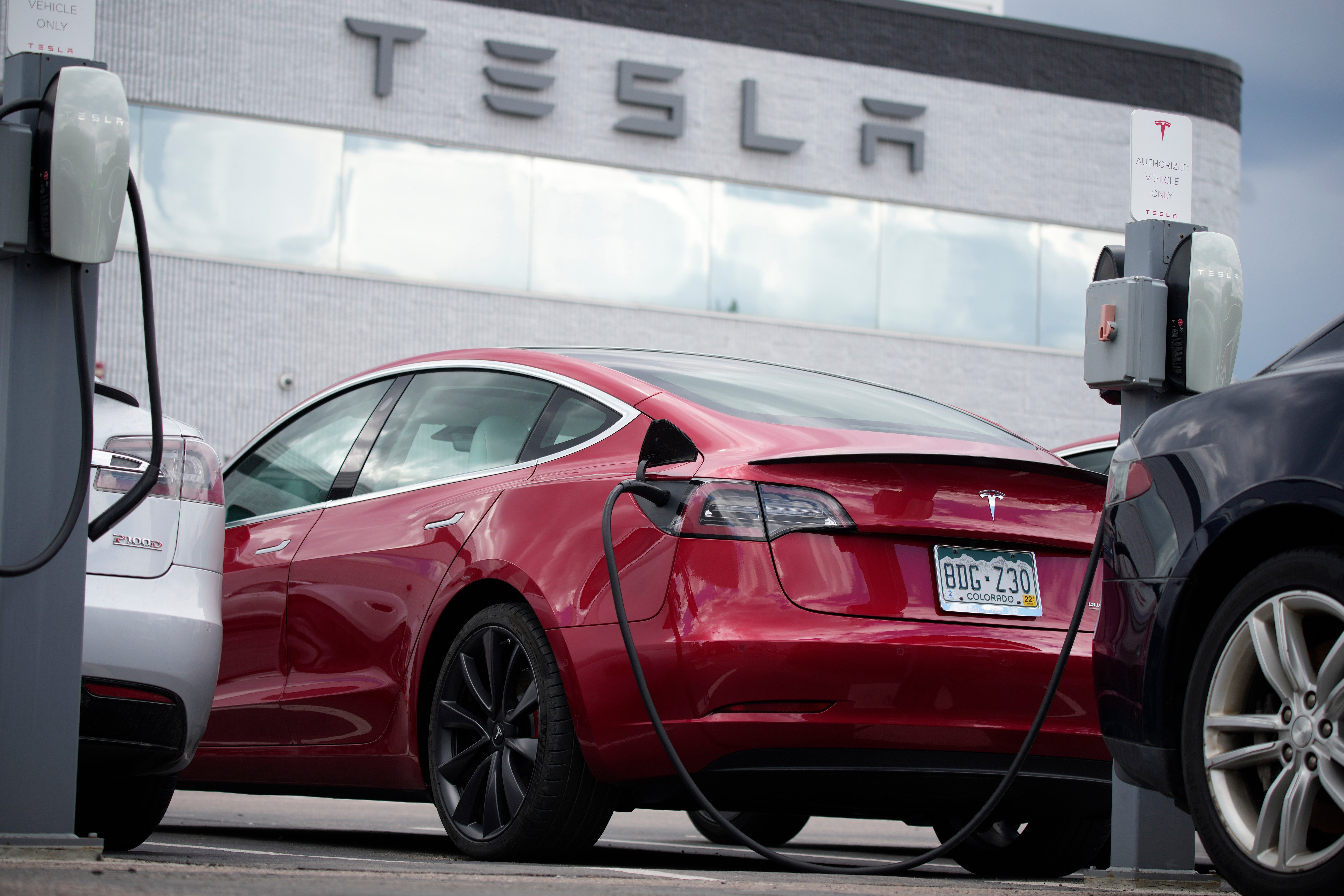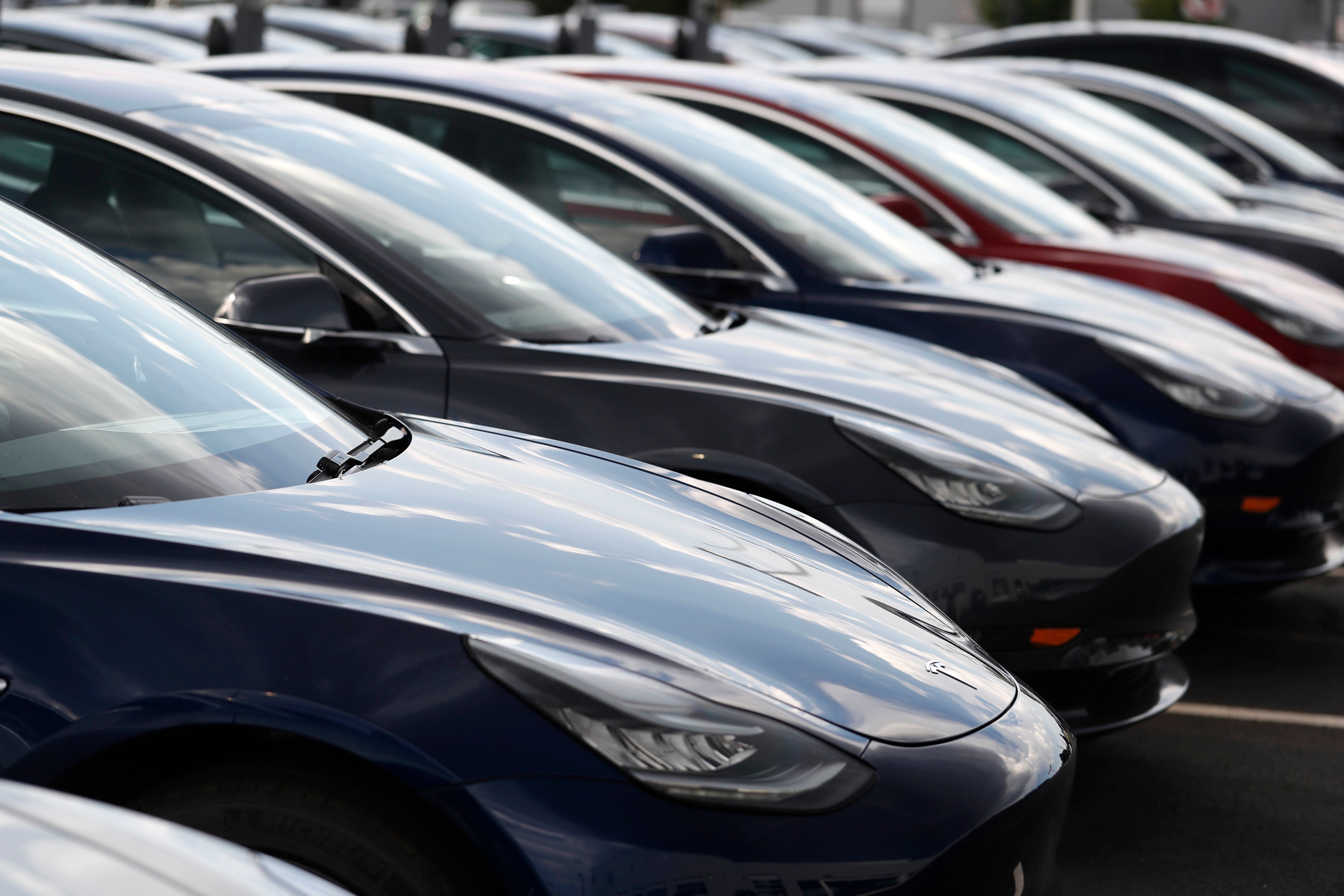- News
- World
- Americas
 open image in galleryWendy Dennis was driving in a Tesla Model 3 - pictured - with her husband Jeff at the time of the accident (AP)
open image in galleryWendy Dennis was driving in a Tesla Model 3 - pictured - with her husband Jeff at the time of the accident (AP)
The latest headlines from our reporters across the US sent straight to your inbox each weekday
Your briefing on the latest headlines from across the US
Your briefing on the latest headlines from across the US
 Email*SIGN UP
Email*SIGN UPI would like to be emailed about offers, events and updates from The Independent. Read our Privacy notice
A federal lawsuit alleges that design flaws in a Tesla Model 3 caused it to suddenly accelerate out of control, leading to a crash into a utility pole and subsequent fire.
The incident tragically killed a woman and severely injured her husband.
The legal filing, submitted on Friday in the U.S. District Court for the Western District of Washington, further claims that a separate defect with the vehicle’s door handle design thwarted bystanders attempting to rescue the driver, Jeff Dennis, and his wife, Wendy, from the burning car.
Wendy Dennis died in the 7 January 2023 crash in Tacoma, Washington. Her husband, Jeff, sustained severe leg burns and other injuries, according to the lawsuit. Messages left on Monday with the plaintiffs’ attorneys and Tesla were not immediately returned.
The lawsuit seeks punitive damages in California since the Dennis’ 2018 Model 3 was designed and manufactured there. Tesla also had its headquarters in California at the time before later moving to Texas.
 open image in galleryThe lawsuit claims Wendy and Jeff Dennis’s car accelerated out of control, hit a pole and then burst into flames (Copyright2018 The Associated Press. All rights reserved.)
open image in galleryThe lawsuit claims Wendy and Jeff Dennis’s car accelerated out of control, hit a pole and then burst into flames (Copyright2018 The Associated Press. All rights reserved.)Among other financial claims, the lawsuit seeks wrongful death damages for both Jeff Dennis and his late wife’s estate. It asks for a jury trial.
Tesla doors have been at the center of several crash cases because the battery powering the unlocking mechanism shuts off in case of a crash, and the manual releases that override that system are known for being difficult to find.
Last month, the parents of two California college students killed in a Tesla crash sued the carmaker, saying the students were trapped in the vehicle as it burst into flames because of a design flaw that prevented them from opening the doors. In September, federal regulators opened an investigation into complaints by Tesla drivers of problems with stuck doors.
Jeff and Wendy Dennis were running errands when the Tesla suddenly accelerated for at least five seconds. Jeff Dennis swerved to miss other vehicles before the car hit the utility pole and burst into flames, the lawsuit says.
The automatic emergency braking system did not engage before hitting the pole, the lawsuit alleges, even though it is designed to apply the brakes when a frontal collision is considered unavoidable.
Bystanders couldn’t open the doors because the handles do not work from the outside because they also rely on battery power to operate.. The doors also couldn’t be opened from inside because the battery had shut off because of the fire, and a manual override button is hard to find and use, the lawsuit alleges.
The heat from the fire prevented bystanders from getting close enough to try to break out the windows.
Defective battery chemistry and battery pack design unnecessarily increased the risk of a catastrophic fire after the impact with the pole, the lawsuit alleges.



